Hello friends and fellow Hivians. I'm back to bring you more from the Joslyn Museum in Omaha, Nebraska. This time, a lot of neat things I saw from Asian art. Without further ado, let me bring some of them to you.
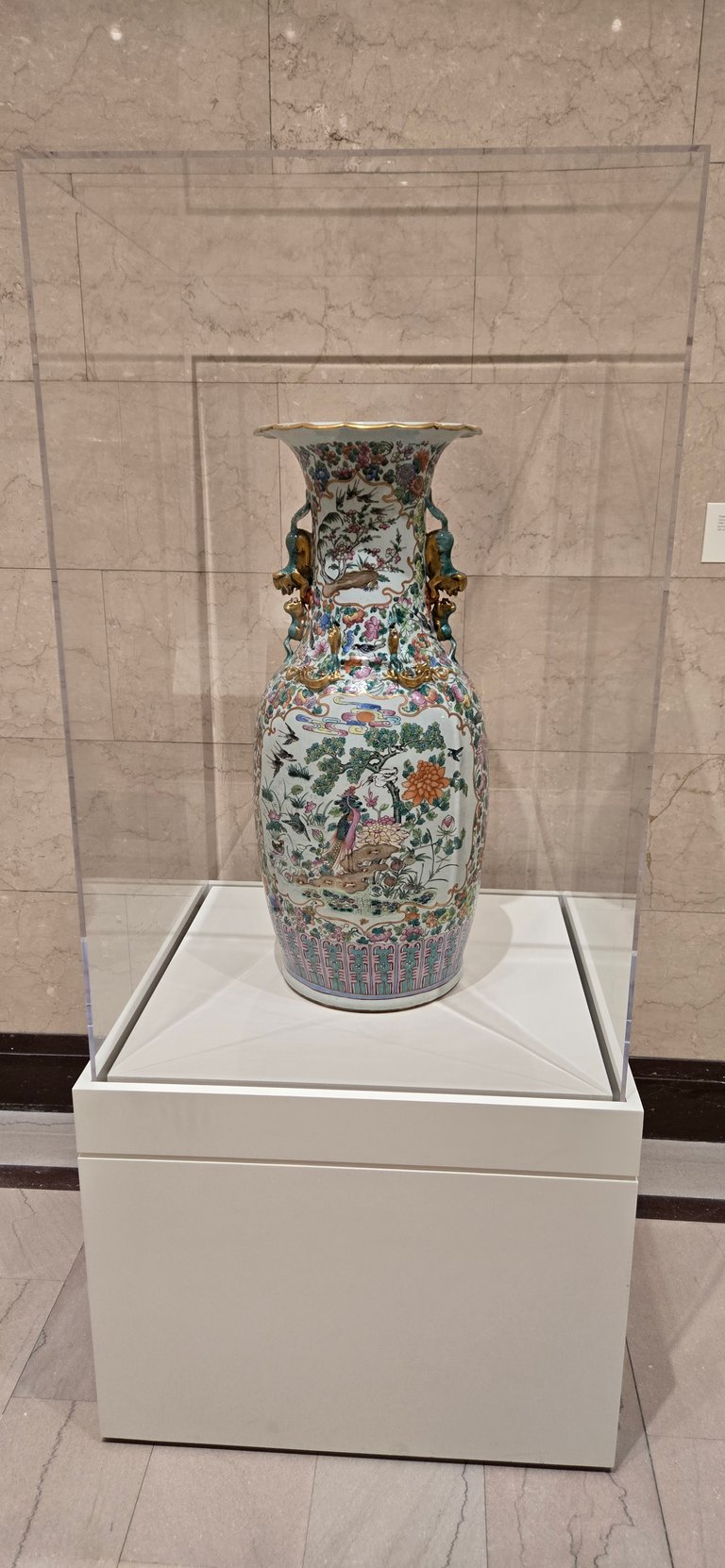 Grand Vase Circa 1796 -1820
Grand Vase Circa 1796 -1820
I will start out with a few Chinese pieces. This vase is beautifully crafted, right? A sure porcelain delight to the eyes. At first glance, the first thing that came to mind was not to break it, haha. I guess that is me seeing too many movies where some idiot is toying around with one not realizing how expensive they are.
 Altar Set Circa 18th-19th Century
Altar Set Circa 18th-19th Century
Chinese altar sets are used for worship, honoring ancestors, and performing rituals. They are found in homes, temples, and ancestral halls. These were constructed using cloisonne enamel on bronze and copper.
 Bell Circa Zhou Period (1100-256 CE)
Bell Circa Zhou Period (1100-256 CE)
This Chinese bell is much different than those in Western cultures. It is hit with a wooden mallet, unlike Western ones, which are swung. Depending on where it is struct, it can make two different noises. They are often decorated with nine (3 rows of 3) raised bumps called mei.
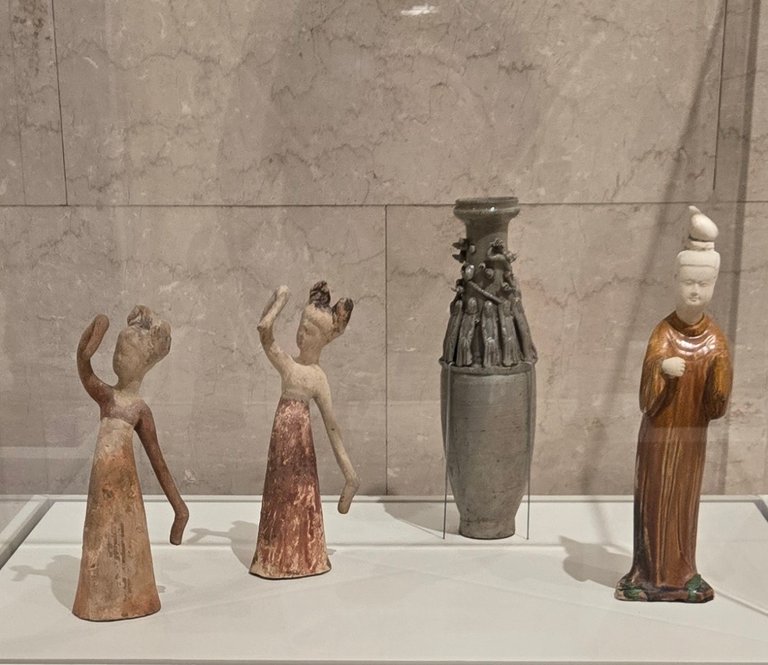 Pair of Female Dancers, Funerary Urn and Tomb Figure of Court Lady
Pair of Female Dancers, Funerary Urn and Tomb Figure of Court Lady
All these Chinese pieces are from the Tang Dynasty (618-907). The pottery art of this period was referred to as sancai. Three colors (amber, green, white) of glazes were applied to earthenware before firing. It was originally used just for funerary items, but artists began to apply it to everyday objects later on.
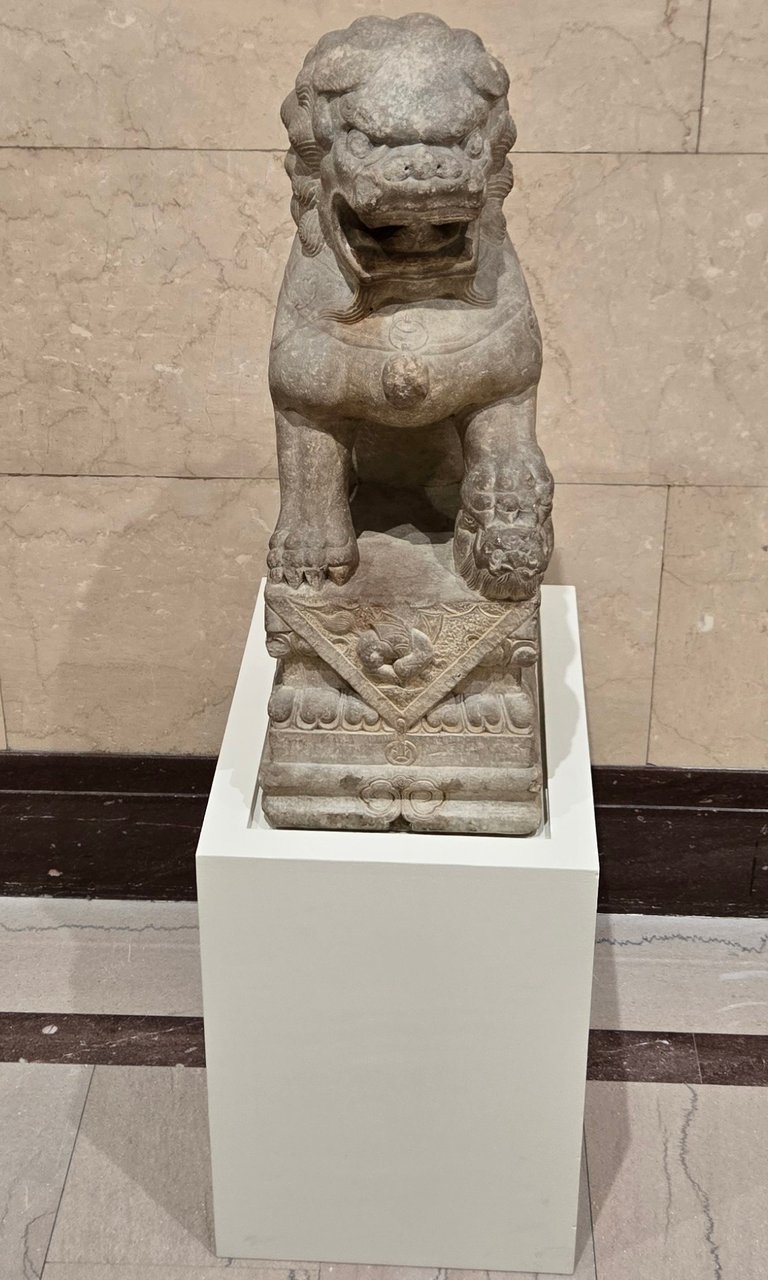 Fu Guarden Dog Circa 18th Century
Fu Guarden Dog Circa 18th Century
Also known as Stone Guardian Lions, they are among the most recognizable in Chinese art. They descend from Buddist imagery from back in the Han Dynasty (206 BCE - 220 CE). There were a pair of them on display facing each other.
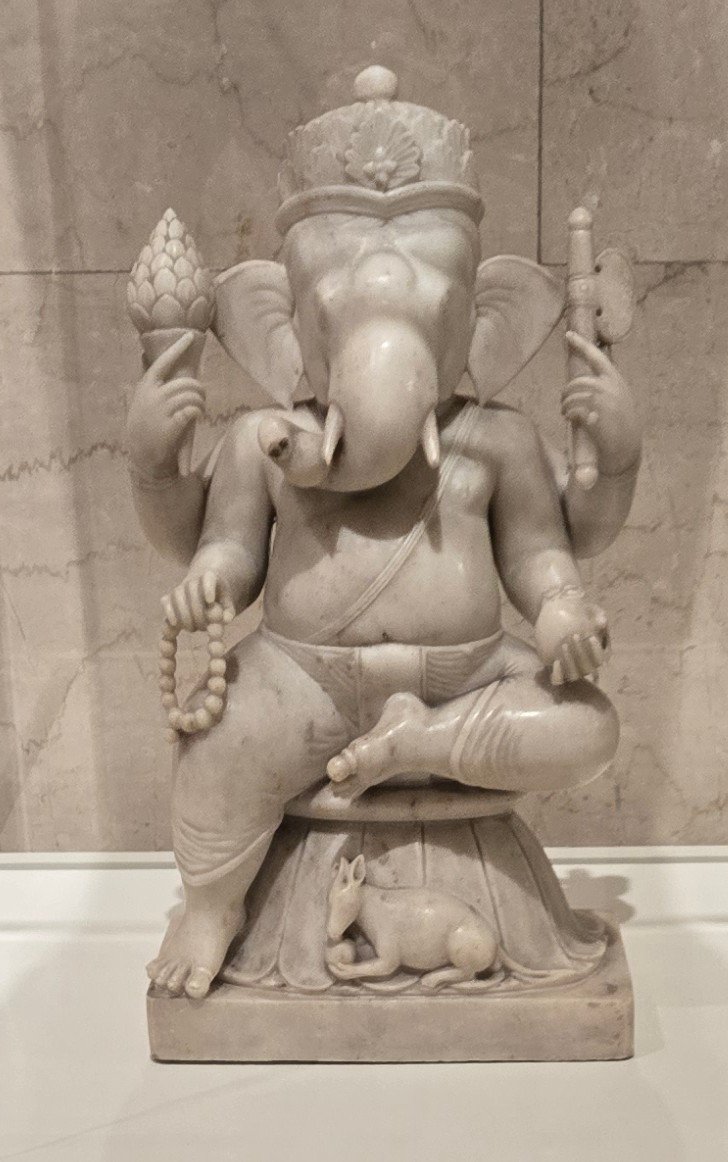 Ganesha East Indian, Mount Abu Region
Ganesha East Indian, Mount Abu Region
This piece is from the 18th century period and is carved out of alabaster. A Hindu God known as the god of beginnings, wisdom, and luck, and is known for removing obstacles. I need to get aquintated with him, haha. Does anyone else feel this way?
 Carved Strut From a Temple Car, East Indian Tamil Nadu
Carved Strut From a Temple Car, East Indian Tamil Nadu
This 19th century piece is made of polychromed wood. Just a small part of what would have been a good-sized temple car. Temple cars or Temple chariots carry representations of Hindu deities around the streets of the temple on festival days. These temple cars are huge and can weigh over 200 tons.
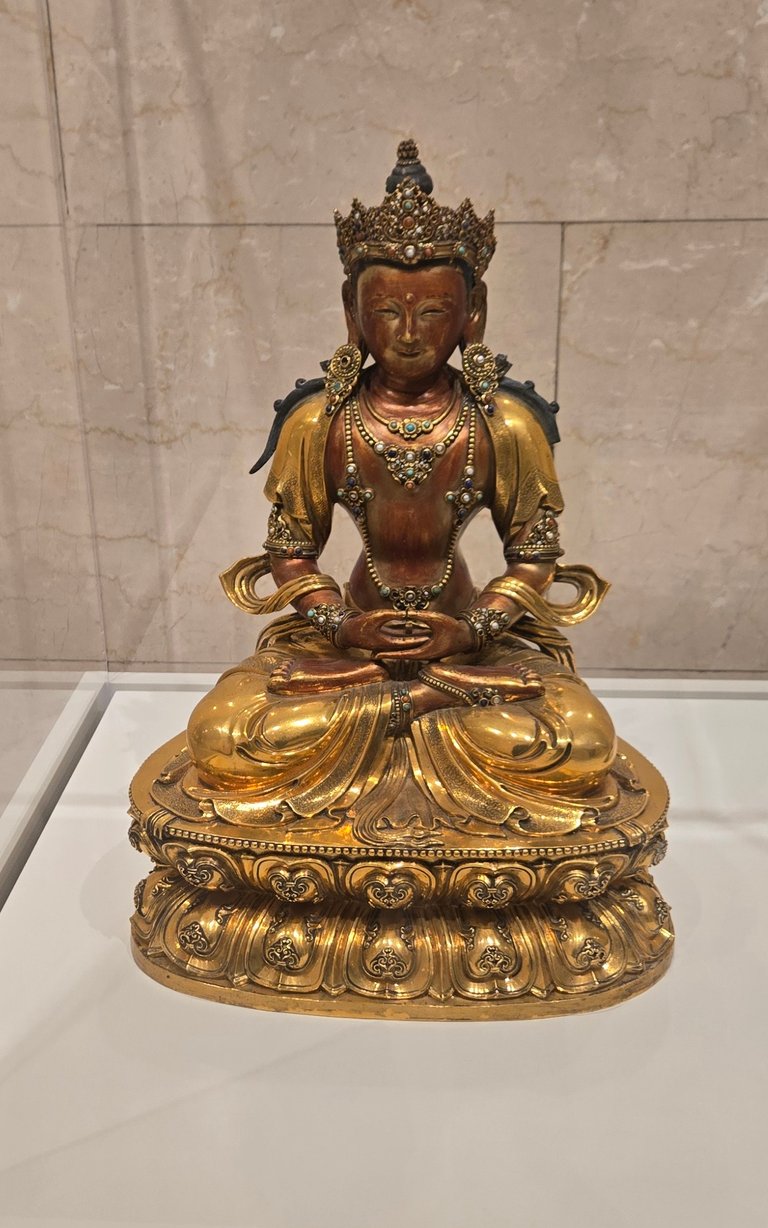 Bodhisattva, Tibetan Circa 1736-95
Bodhisattva, Tibetan Circa 1736-95
This piece is made of gilt bronze. A Bodhisattva is a being who is on the path to enlightenment and becoming a Buddha. They are compassionate and work to free others from suffering. They will stop their enlightenment to help others and it's said they perfect themselves over many lifetimes.
 Phurpa (Tantric Ritual Dagger), Tibetan Circa 19th Century
Phurpa (Tantric Ritual Dagger), Tibetan Circa 19th Century
Made of enabled bronze this ritual dagger is well decorated with many meanings relative to Buddism. The three sided triangular blade stake knife is something to see.
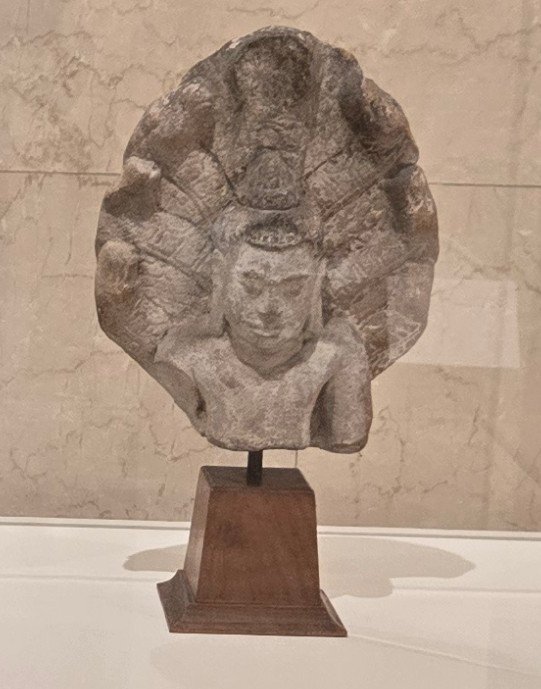 Buddha and Mucalinda, The Seven-Headed Serpant, Cambodia or Thailand, Circa 8th-9th Century
Buddha and Mucalinda, The Seven-Headed Serpant, Cambodia or Thailand, Circa 8th-9th Century
Mucalinda is the king of serphants in Buddhism who protected the Buddha from a flood. After the storm, Mucalinda transformed into a young man and bowed to the Buddha. Intially, I thought a seven-headed serpant would be an evil figure, hehe.
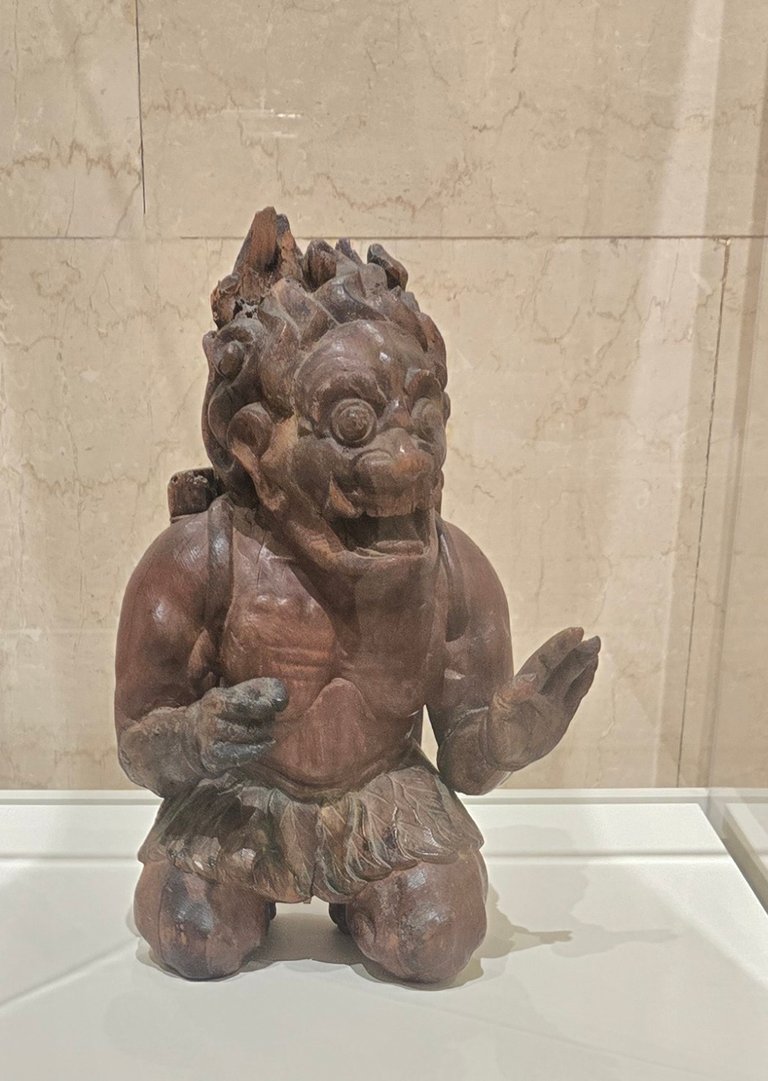 Kamakura Guardian Figure, Japan, Kamakura Period (1185-1333)
Kamakura Guardian Figure, Japan, Kamakura Period (1185-1333)
Buddusm was introduced in Japan in the 6th century. Over time beliefs were mixed with another religion, Shinto. So Buddist workshipped Raijin, the Shinto god of thunder, depicted here. They saw him as a protector of temples for both religions.
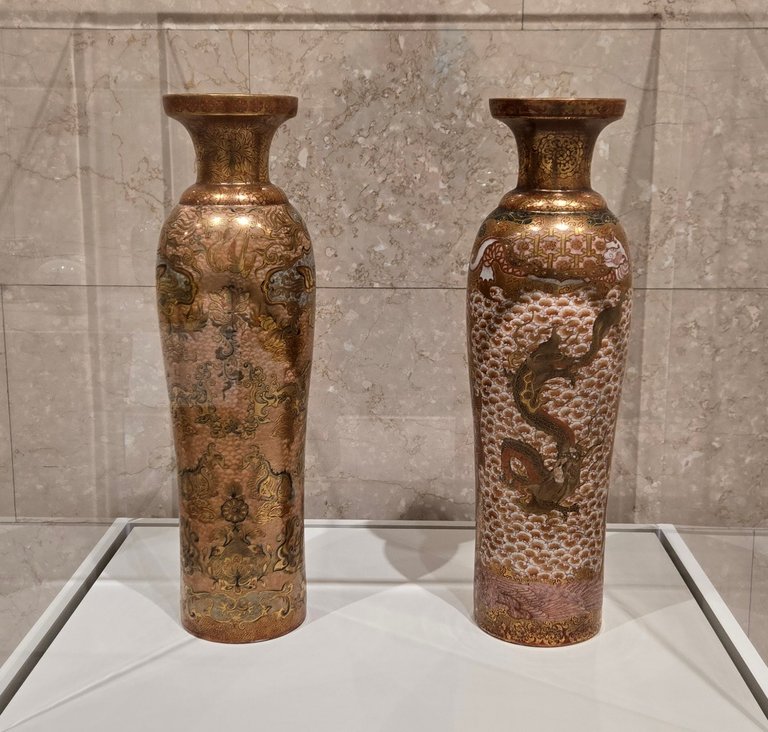 Vase, Japan Meiji Period (1868-1912)
Vase, Japan Meiji Period (1868-1912)
Both of these vases are made from gilded porcelain with red iron. Tall and skinny, but don't they just compliment each other? I think they do and I like the colors.
There was quite a bit more of pottery and other Buddha figurines. It was a pretty cool filled hallaway of Asian artifacts and I hope you enjoyed what I shared.
This is all I have for you this time. Have you been to a museum lately? If so, post about it right here in the Museum Community.
Take care, stay safe and have a good week ahead. Until next time!


 -
-